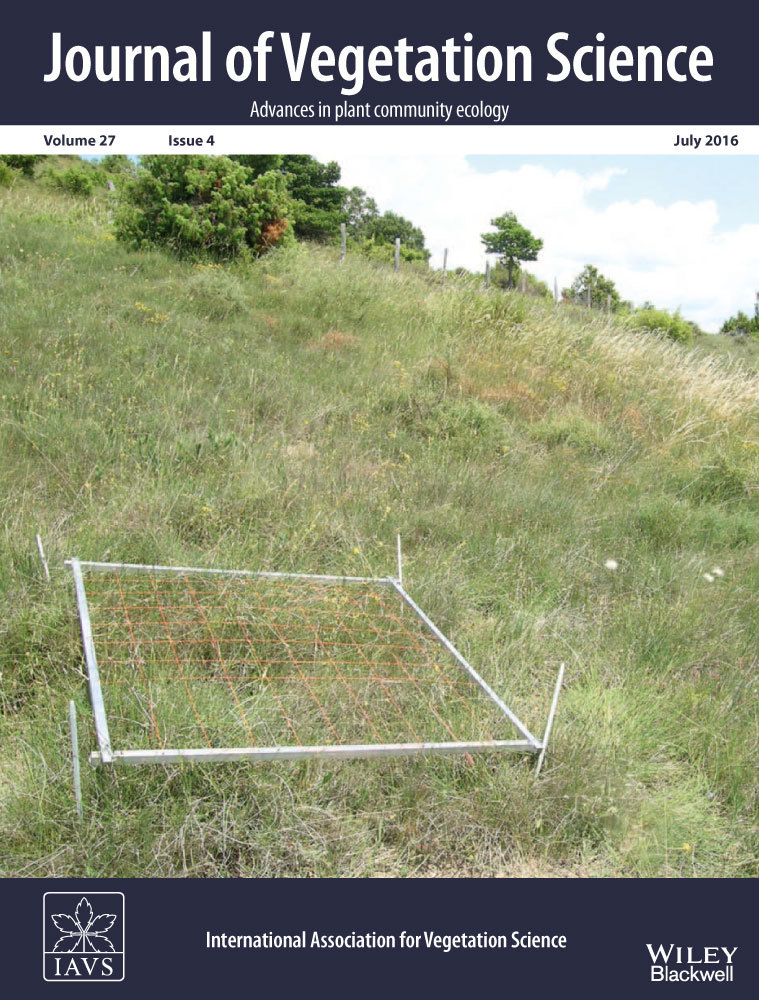Ver ítem
- xmlui.general.dspace_homeCentros Regionales y EEAsCentro Regional Catamarca - La RiojaEEA La RiojaArtículos científicosxmlui.ArtifactBrowser.ItemViewer.trail
- Inicio
- Centros Regionales y EEAs
- Centro Regional Catamarca - La Rioja
- EEA La Rioja
- Artículos científicos
- Ver ítem
Spatial and temporal patterns of herbaceous primary production in semi‐arid shrublands: a remote sensing approach
Resumen
Questions: Can herbaceous above‐ground net primary production (ANPP) be estimated from remote sensing when woody and herbaceous plants are intermingled? How does herbaceous ANPP change in space and time in an ecosystem dominated by woody species? What are the main controls of herbaceous ANPP to paddock scale?
Location: Native plant communities and buffelgrass roller chopped pastures of the Arid Chaco, western Argentina (28–32° S, 64–67° W; area: 100 000
[ver mas...]
Questions: Can herbaceous above‐ground net primary production (ANPP) be estimated from remote sensing when woody and herbaceous plants are intermingled? How does herbaceous ANPP change in space and time in an ecosystem dominated by woody species? What are the main controls of herbaceous ANPP to paddock scale?
Location: Native plant communities and buffelgrass roller chopped pastures of the Arid Chaco, western Argentina (28–32° S, 64–67° W; area: 100 000 km2).
Methods: We decomposed normalized difference vegetation index (NDVI) data from MODIS (pixel size: 250 m × 250 m) into woody (W) and herbaceous (H) components. We calibrated the relationship between field estimates of herbaceous ANPP and the H component of NDVI using linear regression. The regression model fitted was applied to a 10‐yr MODIS database for four paddocks to estimate herbaceous ANPP. We analysed the relationship between herbaceous ANPP and watering point distance and growing season precipitation.
Results: The annual integral of NDVI × proportion of the herbaceous component [H/(H + W)] explained 71% and 91% of herbaceous ANPP variation in native plant communities and buffelgrass roller chopped pastures, respectively. The regression model fitted, however, differed (P < 0.05) between the two types of system. The NDVI annual integral explained a higher proportion of herbaceous ANPP variations than the NDVI annual peak or the growing season (December–April) integral. For native plant communities, herbaceous production increased significantly (P < 0.05) with watering point distance, and marginally significantly (P < 0.10) with growing season precipitation. For buffelgrass roller chopped pastures, the herbaceous production increased significantly (P < 0.05) with growing season precipitation.
Conclusion; Our model was able to estimate herbaceous ANPP from the decomposition of an NDVI time series that included woody components. Thus, the model provides the basis for more accurate monitoring of spatial and temporal variability of herbaceous ANPP in areas where herbaceous and woody plant components co‐exist. Applying our models, we detected clear spatial and temporal patterns of herbaceous ANPP. The possibility of describing in a spatially explicit way the past 14 yrs of herbaceous ANPP allows designing livestock management strategies and devise alternatives to control degradation processes in the Arid Chaco.
[Cerrar]

Autor
Blanco, Lisandro Javier;
Paruelo, José María;
Oesterheld, Martin;
Biurrun, Fernando Noe;
Fuente
Journal of Vegetation Science 27 (4) : 716-727 (July 2016)
Fecha
2016-07
ISSN
1100-9233
1654-1103
1654-1103
Formato
pdf
Tipo de documento
artículo
Palabras Claves
Derechos de acceso
Restringido
 Excepto donde se diga explicitamente, este item se publica bajo la siguiente descripción: Creative Commons Attribution-NonCommercial-ShareAlike 2.5 Unported (CC BY-NC-SA 2.5)
Excepto donde se diga explicitamente, este item se publica bajo la siguiente descripción: Creative Commons Attribution-NonCommercial-ShareAlike 2.5 Unported (CC BY-NC-SA 2.5)

